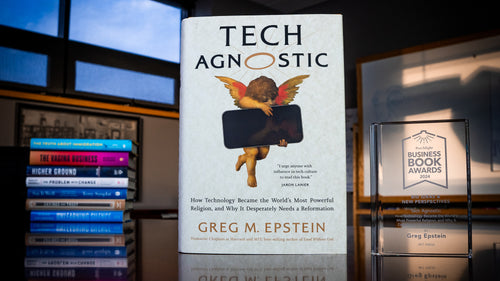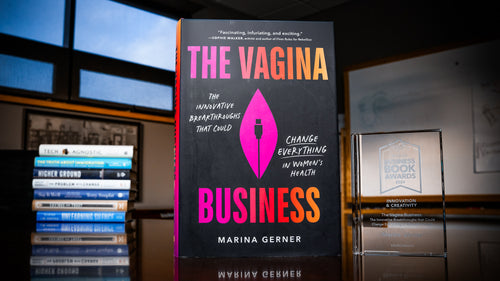An Excerpt from Unjust Debts
 Bankruptcy is the busiest federal court in America. In theory, bankruptcy in America exists to cancel or restructure debts for people and companies that have way too many—a safety valve designed to provide a mechanism for restarting lives and businesses when things go wrong financially.
Bankruptcy is the busiest federal court in America. In theory, bankruptcy in America exists to cancel or restructure debts for people and companies that have way too many—a safety valve designed to provide a mechanism for restarting lives and businesses when things go wrong financially.
In this brilliant and paradigm-shifting book, legal scholar Melissa B. Jacoby shows how bankruptcy has also become an escape hatch for powerful individuals, corporations, and governments, contributing in unseen and poorly understood ways to race, gender, and class inequality in America. When cities go bankrupt, for example, police unions enjoy added leverage while police brutality victims are denied a seat at the negotiating table; the system is more forgiving of civil rights abuses than of the parking tickets disproportionately distributed in African American neighborhoods. Across a broad range of crucial issues, Unjust Debts reveals the hidden mechanisms by which bankruptcy impacts everything from sexual harassment to health care, police violence to employment discrimination, and the opioid crisis to gun violence.
In the tradition of Matthew Desmond’s groundbreaking Evicted, Unjust Debts is a riveting and original work of accessible scholarship with huge implications for ordinary people and will set the terms of debate for this vital subject.
The following excerpt is adapted from from the book's Introduction.
◊◊◊◊◊
This book is a story of falling out of love. With a law.
The story almost never got off the ground. For my last year of law school, I signed up for a course about bankruptcy. I had second thoughts while out with friends the night before the fall semester started, on a roof deck at a TGI Fridays. The professor held high expectations and a preference for early-morning teaching. Did I want to spend my last year of school working so hard, on a subject my friends considered dull, dry, and just about money?
I set the alarm, walked to school to check out the first class, and, until now, never looked back. I learned that the federal Bankruptcy Code intersects with the lives of more people in the United States than virtually any other law does. The system’s instruction manual enacted by Congress, the Bankruptcy Code, was a jigsaw puzzle. Fitting the pieces together helped me see the big picture: restoring economic opportunity in a capitalist society.
The potency of bankruptcy also held my attention. I learned that every contract in America contains an invisible caveat: different enforcement rules apply if one of the parties files for bankruptcy. Whatever might have happened under ordinary law, bankruptcy could change the outcome like the flip of a switch. But this legal equivalent of a shiny set of power tools existed for a reason, or so I thought. To my student self, the bankruptcy system looked like a useful form of social insurance, a safety valve giving people the freedom to try, fail, and try again. I was taught that bankruptcy could deliver lifechanging relief, reduce stress and suffering, and promote innovation and economic participation.
That class and that professor, Elizabeth Warren, changed my life. As graduation crept closer, she encouraged me to apply to work for a federal bankruptcy court, an institution I had only recently learned existed, in Chicago, a city I had never visited. After taking the bar exam required for new lawyers, I drove overnight in a rented van to start my professional life as a law clerk for the Honorable Robert E. Ginsberg.
Working with Judge Ginsberg gave me a front-row seat in the most bustling type of federal court in America. The year was 1994 and bankruptcy filings were skyrocketing. In the federal courthouse, a tall black box designed by Ludwig Mies van der Rohe, I watched and learned as Judge Ginsberg distinguished between better and worse legal arguments, better and worse lawyering, better and worse cases.
The court was a forum of last resort for families that experienced bad things in volume: layoffs and shortened work hours, crumbled marriages, miscarriages and failed adoptions, flimsy health insurance and medical crises. I was struck by how people had tried everything, for better or worse, before resorting to bankruptcy. One laid-off hospital worker had used credit card cash advances to gamble on a riverboat, intending to bridge the financial gap until he got his job back.
Bankrupt businesses also landed in Judge Ginsberg’s courtroom. They were nightclubs, hardware store chains, suburban home developers, paper goods manufacturers, and a security guard company responsible for airports and National Football League stadiums. Were they strong enough to reorganize, or should they shut down? Every day, I rushed to the courthouse to learn what would happen next.
As bankruptcy filings rose along with debt levels and economic insecurity, the consumer credit industry lobbied Congress to make personal bankruptcy relief harder and more expensive to access. It wasn’t wrong to want to improve bankruptcy law. My job after the Chicago court involved policy work to do just that. There was plenty to fix, for sure. And, although we did not yet have the research to articulate all the problems, the personal bankruptcy system already was treating Black and white filers differently, reinforcing the effects of race discrimination in credit markets and elsewhere.
But increasing fairness and efficiency were not what the credit industry was after. Its message was simple—bankruptcy law should not reward irresponsibility and bad decisions—and yet its requested fixes were horribly complicated. To anyone reading the fine print, it was clear that the goal was to make a mess, to squeeze extra profits from the least of us, whatever the causes of financial distress or the effects on everyone else. Insistent, but patient, the lobbyists got much of what they wanted by 2005, when Congress made hundreds of changes to bankruptcy law on a largely bipartisan basis.
The responsibility message not only was misleading, but destined to be unevenly applied. The American legal system tends to be more deferential to artificial persons like big corporations than to humans of modest means. Although the 2005 legislation included some changes to business bankruptcy, the consumer credit industry reforms did not try to make big enterprises take personal responsibility for bad decisions by restricting their bankruptcy access. The consumer credit industry was not focused on whether enterprises used bankruptcy to halt jury trials triggered by hazardous products or child sex abuse. The consumer credit industry was unconcerned with whether cities minimize the legal consequences of police brutality against their Black and brown residents by filing for bankruptcy. The consumer credit industry was not trying to stop businesses from using bankruptcy to sell companies quickly, shedding responsibilities to provide health care for retirees in hazardous industries or to remedy employment discrimination.
In other words, at the same time bankruptcy has fallen short in providing basic debt relief for struggling families, lawyers for big enterprises and other powerful parties have transformed bankruptcy into a legal Swiss Army knife. They bring into the system all sorts of policy problems beyond its domain and institutional capacity, even climate change if you can believe it.
[…]
The system needs to be a fair and effective, but targeted, tool to relieve overindebtedness. It should not be a legal Swiss Army knife tackling a world of policy problems that tax the system’s institutional competence and lead to regressive effects. The stories in this book lead back to bankruptcy’s broad definitions of debt and claim—key to recruiting so many kinds of policy problems into bankruptcy—and whether the system might be fairer and more consistent with democratic values if it had a narrower scope.
Two key words embedded in this book’s title are just and debts. The multiple meanings of just lead to a common end. Just connotes justice. Just also is a limiter, signifying “only.” The American economy, families, and communities benefit when the bankruptcy system provides robust cancellation of obligations the average person recognizes as debts. On that central objective, the system has fallen short. Meanwhile, too many system activities bear distant relation to canceling or restructuring debts as traditionally understood, and are disrupting other societal objectives and foundational legal principles, including separation of powers and federalism. If this book has a policy prescription, it is to reduce the footprint of the bankruptcy system. To contribute to a more just legal environment and society, the bankruptcy should focus on just debts.
Copyright © 2024 by Melissa B. Jacoby. This excerpt originally appeared in Unjust Debts: How Our Bankruptcy System Makes America More Unequal, published by The New Press. Reprinted here with permission.



